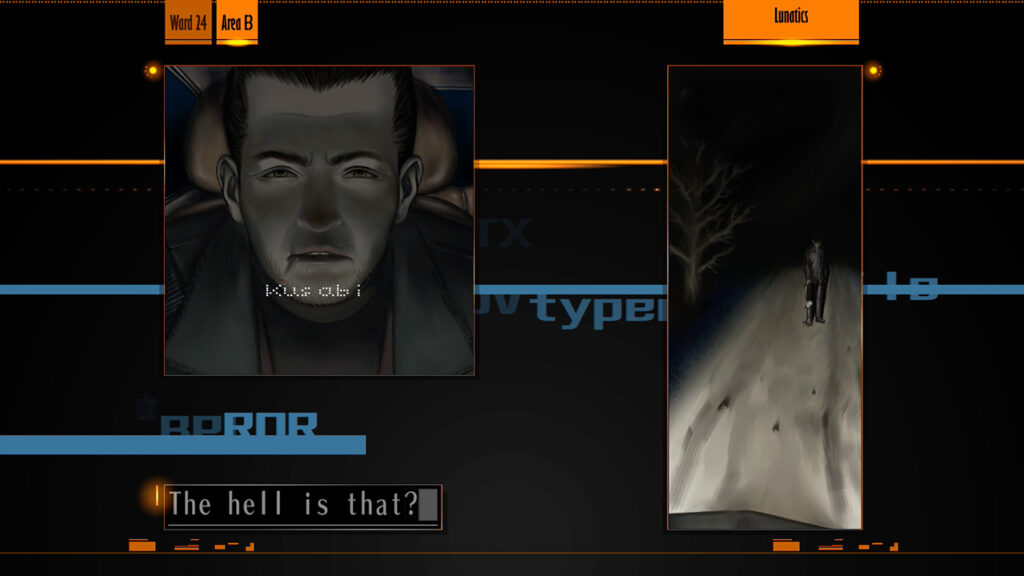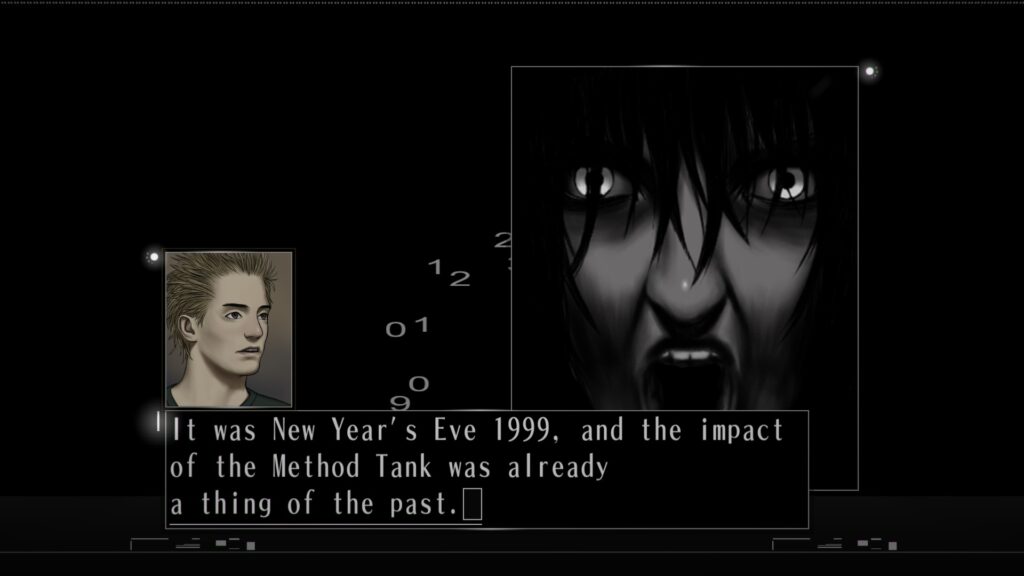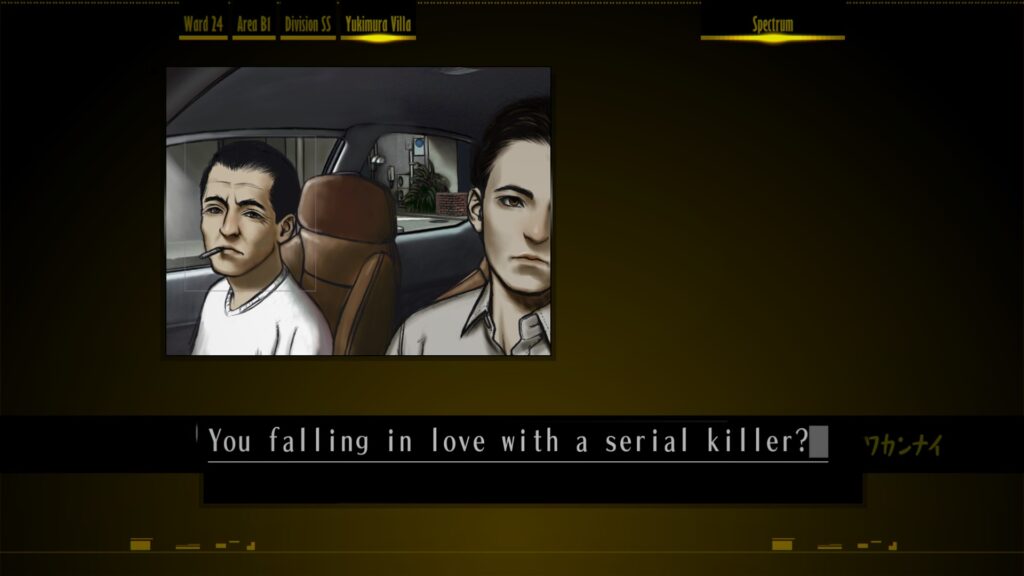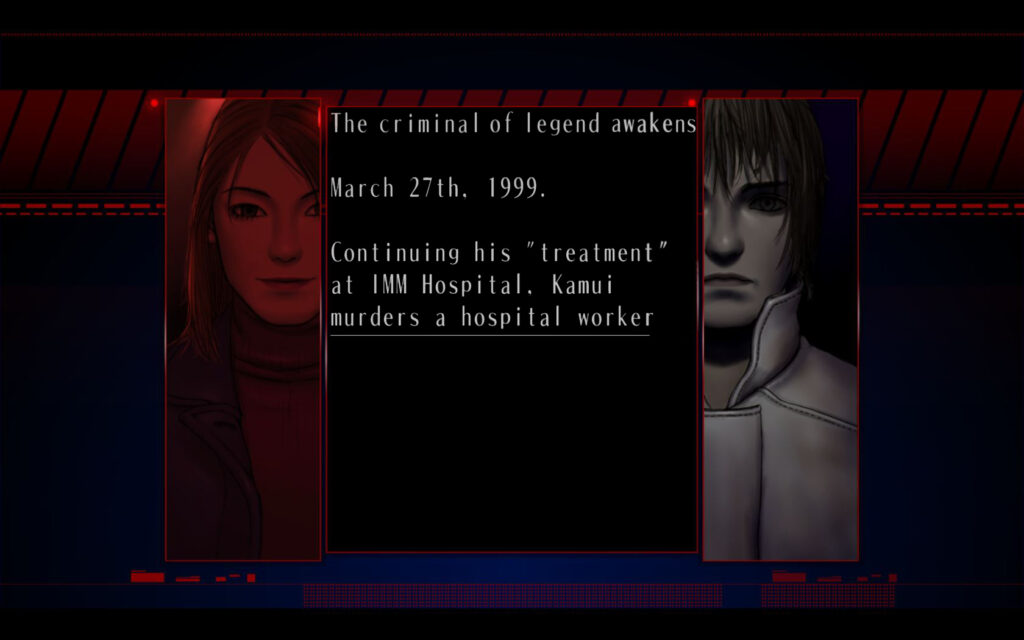The Silver Case is a delirious noir masterpiece
A short while ago, I posed the question “have you played The Silver Case?” — because I hadn’t, and, as a relative newcomer to Goichi Suda’s work, I was having a thoroughly interesting time exploring the first game released under the Grasshopper Manufacture label.
To recap briefly, The Silver Case originally came out in 1999 on PlayStation as a Japan-only release. More recently, it was remastered for modern systems — initially PC, then subsequently PS4 and Switch — and this latter version was localised to form the game’s first ever western release.
The “remastered” version also incorporates a few additional bits of narrative on top of what the PlayStation original offered; these are primarily designed to lead into the game’s follow-ups: Flower, Sun and Rain for Nintendo DS and PlayStation 2, and The 25th Ward: The Silver Case for PlayStation 4, Switch and PC. We’ll get to those in due time, don’t you worry.

Now I’ve played all the way through The Silver Case, though, I feel in a better place to comment on it. Because it’s a thoroughly unusual and fascinating game that most certainly won’t be to everyone’s taste — but if you’re on board with what it offers, you’ll find it to be a modern noir masterpiece that is worthy of standing alongside the all-time giants of the genre.
The Silver Case unfolds in two distinct components. The “main” story unfolds in the “Transmitter” scenario, in which “you” play an active role, having entered your name at the start of the game. Complete a Transmitter chapter and a corresponding Placebo chapter unlocks; this unfolds from the perspective of a reporter-turned-private investigator named Tokio Morishima who ocasionally shows up in Transmitter, and who also plays a role in Flower, Sun and Rain.
You’re actually free to choose how you approach the two parallel scenarios. In my playthrough, I alternated between playing Transmitter and Placebo, since I found that Placebo acted as a good means of summarising what happened in the Transmitter chapters from a more detached perspective, and it helped me understand the narrative as a whole much better. You don’t have to do it like this, though; if you prefer, you can play through all of Transmitter and then leave Placebo for after. I suspect the game experience as a whole may well feel quite different if you do that.

Let’s be clear: in both scenarios, your interaction with The Silver Case is pretty limited. In Transmitter, you’re primarily following along with other characters as interesting things happen, though you very occasionally get to explore locations and even less frequently get to solve puzzles.
There’s the distinct sense that Suda and company included the puzzles in The Silver Case out of a sense of obligation to provide “gameplay” more than anything; in the remaster, there’s a button that immediately solves them for you without penalty, and many commentators have argued that Flower, Sun and Rain’s structure and interactivity mechanics act as a means of criticising and satirising unnecessary “puzzle” mechanics that are incorporated just for the sake of giving the player something to do.
At heart, The Silver Case is a kinetic novel. The story happens, and you’re there — and sometimes you’re not. This is especially apparent in the Placebo chapters, where your interaction pretty much entirely consists of walking up to Tokio’s computer and checking his emails. He’ll go on to narrate things that happened off-screen which, despite you playing as him, you didn’t witness.

Likewise, in the Transmitter chapters, your character is canonically mute — and not just in the “silent protagonist” sense — and is thus unable to participate directly in conversations. The initial chapters of the game imply that “you” were so severely traumatised by a particular event that you were left unable to speak, and yet your presence is still clearly valued by the people around you.
This is probably the biggest strength of The Silver Case. The writing and characterisation is so incredibly strong and involving that, after a while, you simply stop noticing the fact that you’re not really doing anything. This is a story that is captivating, compelling and thoroughly fascinating, and it’s filled with wonderful characters. Not all of those characters are people you will like — nor are they supposed to be people that you like — but every single one of them is crafted with such care and attention that they feel like real people.
The story can be looked upon as being confusing — but that’s also clearly deliberate. The game plays around with the passage of time quite a bit, often choosing to show the aftermath of things rather than the events themselves, and there are distinct hints over the course of the narrative that both “you” and Tokio have mental health issues to such a degree that you occasionally hallucinate, have bad dreams or simply suffer from a slightly twisted and delirious view of reality.
Not only that, but you literally perceive the world differently as the two playable characters; the art styles for both Transmitter and Placebo are markedly different from one another — and in some cases, the art style even varies radically between chapters. All this is textbook “unreliable narrator” stuff right there — and it works brilliantly in the context of the tale that The Silver Case has to tell.

You’ll notice I’ve been pretty vague about the details of that narrative. That’s because part of the appeal of The Silver Case is figuring out what it’s actually about. Initially, it’s set up to be something of a murder mystery where you’re pursuing a notorious serial killer who appears to have returned after 20 years — and then it throws chapters at you that are seemingly completely unrelated, such as one where your character befriends a young boy who is so grief-stricken at the death of his friend that he believes him to still be alive.
What these seemingly unrelated cases and events do is flesh out the world of The Silver Case and the characters who are involved in delivering its narrative. By seeing these characters interacting in situations and scenarios outside of what the “main plot” is, we get a much more well-rounded look at who they are, what they’re capable of and what their feelings about various matters are. And this goes for side characters just as much as the main ensemble cast, too; it’s hard not to come away with a deep affection for the nameless barman in whom Tokio often finds himself confiding, for example.
As noted, The Silver Case isn’t an experience that everyone will enjoy or want to engage with. I’ve seen people on Steam go so far as to request refunds because of the simple presence of the “solve the puzzle for me” button — it’s fair to say that people like that were never this game’s intended audience. If you’re up for what this game has to offer, though, which is a fascinating story told in a particularly fascinating way, you’ll have a thoroughly enjoyable time. And you’ll be left wanting more.

Which is good, because there is more, in the form of the aforementioned Flower, Sun and Rain and The 25th Ward: The Silver Case — not to mention the various ways in which other Suda51 games tie in to the “Kill the Past” narrative universe established by this game.
But we’ll have to leave discussions on all that for another day — largely because at the time of writing I haven’t delved into it yet…
The Silver Case is available now for PC via Steam, PlayStation 4 and Nintendo Switch.
Join The Discussion
Rice Digital Discord
Rice Digital Twitter
Rice Digital Facebook
Or write us a letter for the Rice Digital Friday Letters Page by clicking here!
Disclosure: Some links in this article may be affiliate links, which means we may earn a small commission if you make a purchase after clicking on them. This is at no additional cost to you and helps support Rice Digital!
- Letter from the Editor: passing the torch - June 30, 2023
- Super Woden GP 2 is looking promising - June 30, 2023
- Inti Creates is making a 32 bit-style Love Live action platformer - June 26, 2023






